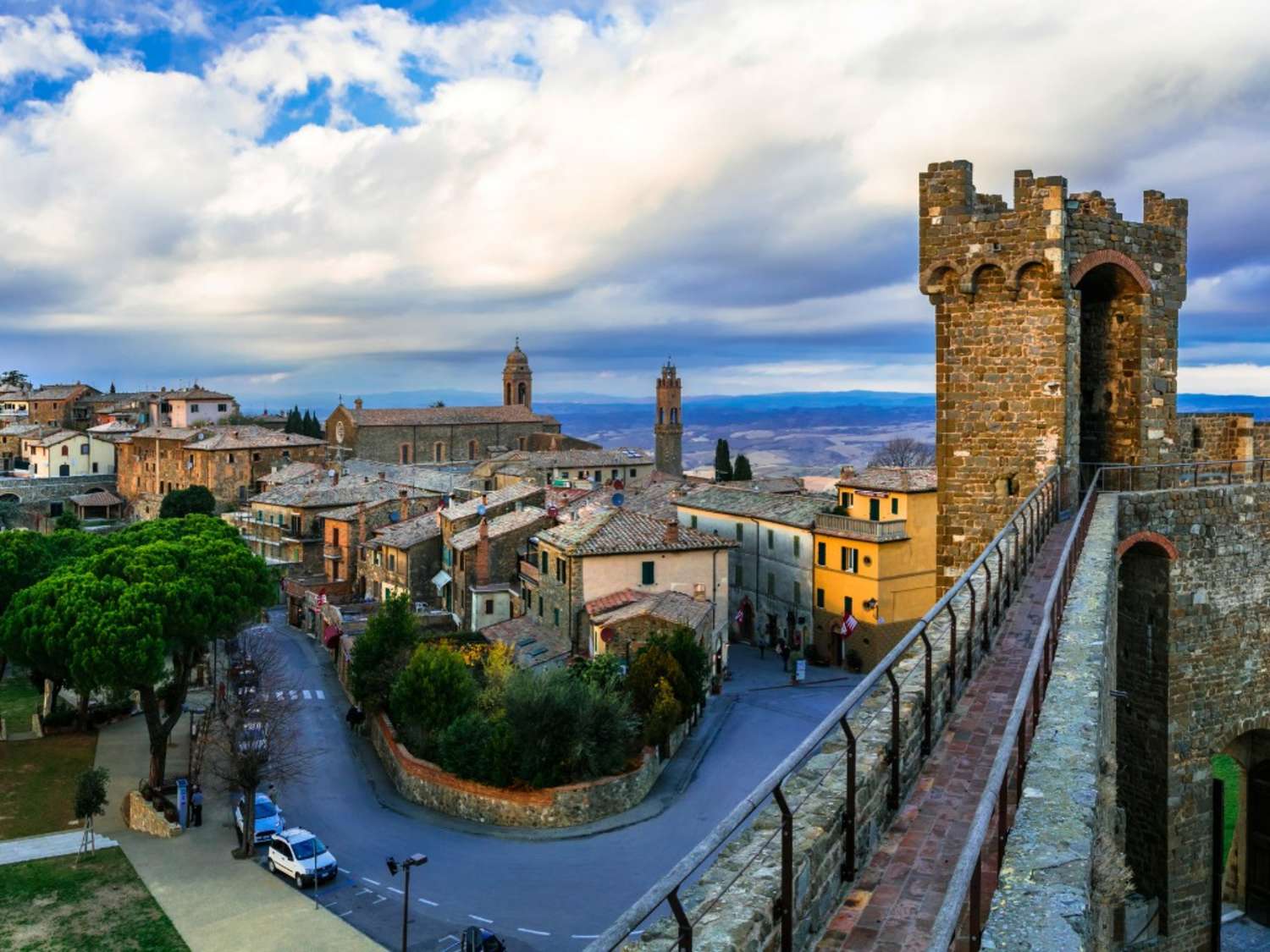Each region in Italy has its distinct charm, and Tuscany takes the cake for its beautiful landscape, intricate history of power and art, and reputation in high culture. Sure, you’ll be drawn into this alluring part of Italy for top travel destinations like Florence and Pisa, but you’ll certainly stay for the exceptional Chianti wines, diverse historic landmarks like no other, and memorable places with seaside views, world-renowned museums with Renaissance and pre-Renaissance relics, and gorgeous rolling green hills. In this post, we’ll give you the inside scoop on which areas and cities you need to visit, both touristy and non-touristy destinations alike.
Florence
Capital city of Tuscany and widely regarded as the birthplace of the Renaissance, Florence’s reputation for artistic, political, and economic flourishing has drawn in wanderers for centuries. Florence’s beautiful burgundy-capped Duomo captures the essence of the monumental cultural hub that it once was. Come and witness the great names in artistic history like Botticelli and Michelangelo as well as the turbulent and scandalous Medici family who commissioned some of the best paintings in the world.

Accademia & Michelangelo’s David
Travelers near and far gather in Florence to lay eyes upon the grand statue that is Michelangelo’s David. Michelangelo created this colossal, perfect marble figure sometime between 1501 and 1504. The great artist was only twenty-three years old when he began to work on the piece that has long become the very symbol of Renaissance sculpture. It was originally commissioned as part of a series depicting statues of prophets that were intended to decorate the Duomo of Florence’s eastern roofline. Instead, the heads of Florence placed David in a public square outside the Palazzo Vecchio, the meeting-place of government and civic engagement in Florence at the time. In 1873, Michelangelo’s masterpiece was moved to the Accademia Gallery, but you can find a replica commemorating its original location in the Palazzo Vecchio.
If you’re in Florence, Michelangelo’s David is a site you just can’t miss not only for its splendor, but also its significance in Florentine history. You might know that the marble figure depicts the Biblical David, the one that defeated the giant Goliath. The statue stands as a testament to the strength and independence of Florence who faced many Goliaths, including the ruling Medici family and the constant threats from powerful, neighboring bodies.
And there’s no better place to house such an important work of art than in the Accademia Gallery. The building itself has historical roots in artistic expression. It was built in the 18th century as a teaching institution for students at the nearby Academy of Fine Arts. Over time, the likes of Florence’s elite, including Napoleon, added to its grand collections, cementing the gallery’s reputation as one of the finest in the world.
If you’re hungry for more fascinating history behind David and the Accademia, you’ll have to join us on our tour in Florence!
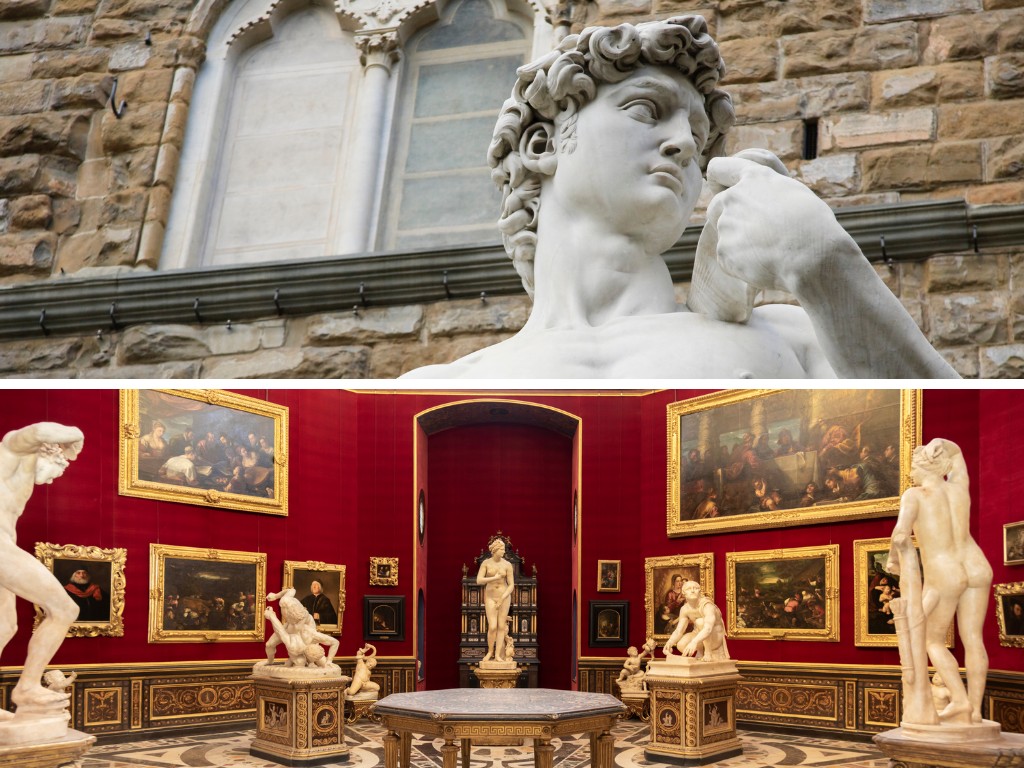
Uffizi Gallery
On the same artistic note, the Uffizi Gallery is also a can’t-miss attraction during your stay in Florence. You’ll get the wonderful opportunity to stare in awe at some of the most important works of Renaissance art. Look out for Botticelli, more Michelangelo, Giotto, Da Vinci, and other legendary names in art history.
Curious about how the Renaissance masters created their frescos? To really enrich your experience and get a true sense of Florentine art, check out our Fresco Workshop where you’ll learn the basic fresco technique from a local artist.
Siena
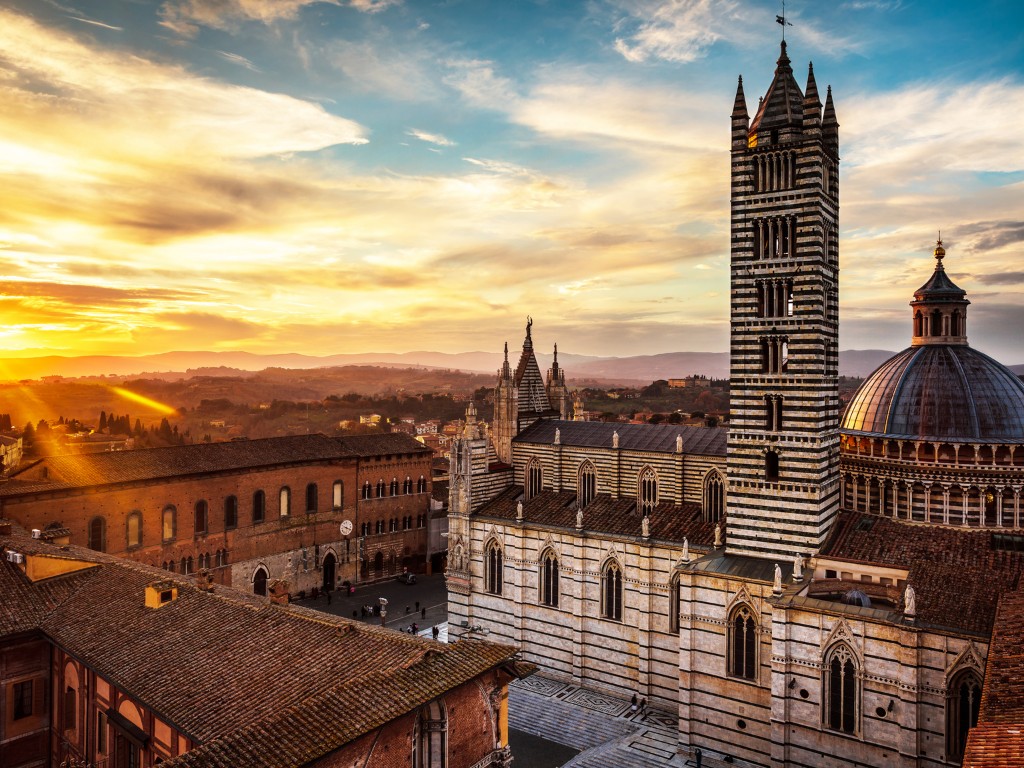
Another memorable destination in Tuscany has to be Siena. Nestled in the southern Chianti hills, this city used to be a commercial haven for bankers in the 13th and 14th century. Not surprisingly, many great Renaissance painters also thrived in this part of Italy. Now, curious travelers visit Siena for its medieval history, artistic heritage, and the Palio horse race.
II Campo & the Palio Horse Race
If you’re lucky enough to be in Siena, start at the fan-shaped central piazza, the II Campo. This is where the old city holds its biannual Palio di Siena, a horse race that has roots in medieval traditions. In medieval times, the piazza was where citizens would hold public games, often involving combat, and bullfights. However, upon banning bullfights in 1590, the people of Siena had to find other means of entertainment, so they eventually held horse races instead. The two horse races, the first on July 2 and the second on August 16, are named after the Madonna of Provenzano and the Assumption of Mary, respectively. One of the main stops on the Via Francigena pilgrimage route, Siena had a huge religious significance on top of its economic importance.
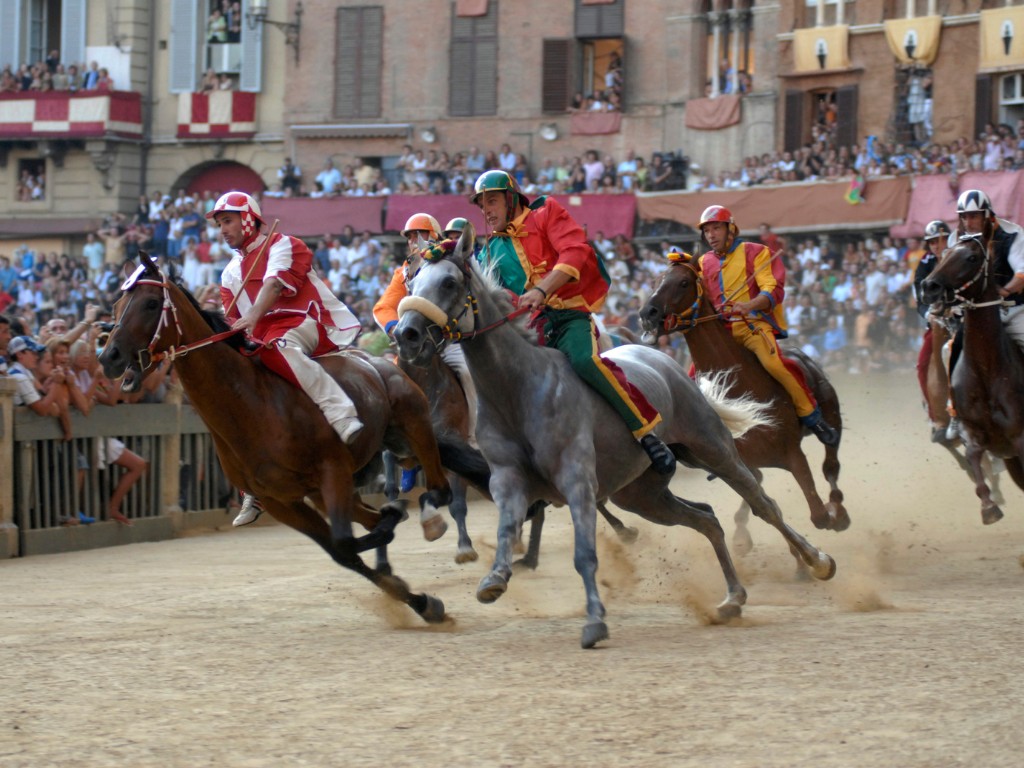
At the piazza, you can also see the Duomo of Siena, the Torre del Mangia, a historic bell tower, and the oldest surviving bank in the world, the Monte dei Paschi di Siena. To get the best view of the city, you’ll have to climb to the top of the bell tower or the Duomo di Siena. From there, you can absorb the beautiful medieval churches, old palazzos, and red-roofed charm of the city. If you don’t know where to start, our local experts can guide you through the sites of Siena.
San Gimignano
This little medieval town sits on top of a hill in the province of Siena. The uniqueness of San Gimignano comes from its many soaring towers. From a distance, you can see a relatively flat cityscape pierced by sporadic rectangular towers. In the late 12th century, the town saw strife between the Guelphs and the Ghibellines, resulting in rival families building tower houses that tried to beat the height of the previous one. At one point, the area had over 72 towers! San Gimignano was able to preserve fourteen of them, which is more than most other medieval cities in Tuscany.
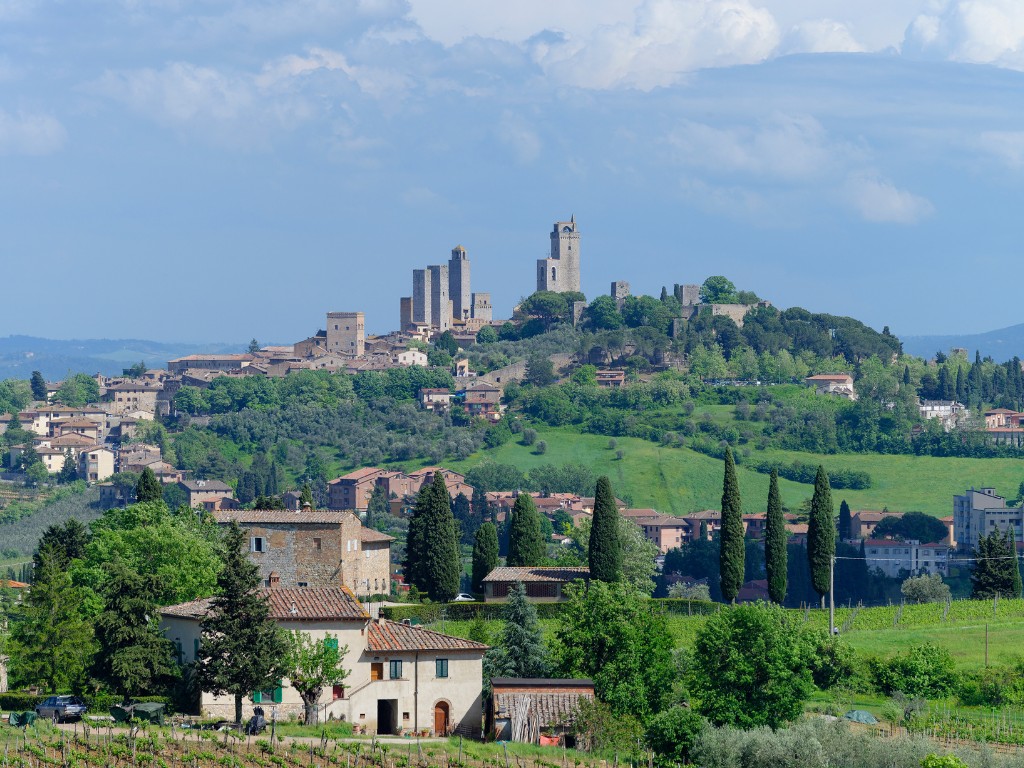
Eventually, the local council put out an ordinance that no family could have a building taller than the tower in the Palazzo Comunale to show its historic significance as the place of civic engagement and to end the feud. Now, the building houses gorgeous frescoes by 13th and 14th century artists. You can also enjoy early Renaissance paintings in the main churches of San Gimignano, the Collegiata, which was formerly a cathedral, and Sant’Agostino.
The area prospered as a trading stop since many Catholic pilgrims stopped in San Gimignano before continuing to Rome and the Vatican during the Middle Ages and the Renaissance. Unfortunately, the Black Death cut San Gimignano’s population in half in 1348. Soon after, it folded under the Medici family’s pressure and became part of Florence’s rule.
San Gimignano is worth a visit if you want to see a true medieval stopping point almost exactly as it stood centuries ago. Stand still in the Piazza della Cisterna, San Gimignano’s main center square, and maybe you’ll hear the Catholic pilgrims resting in this humble town before making their way to Rome. Maybe you’ll see the ghosts of past markets, selling saffron and Vernaccia wine, which grows in the town’s fertile hills. Look around you. The Romanesque and Gothic architecture tell the story of townsfolk that lived and breathed right here, their worries so different from your own. Like many of these medieval hill towns in Tuscany, San Gimignano’s charm comes from its rich, magical history.
Lucca
Most famous for its city walls built during the Renaissance, Lucca is another quaint Tuscan town with centuries of history. These spanning walls are the second largest in Europe for length at about 2.6 miles. It has eleven bastions, six primary entrance points, and other areas of historical significance. Originally, Lucca’s fortified walls had a northern, western, and southern gate. They didn’t have an eastern gate because Florence, their number one enemy to the East, tried to conquer the modest city for centuries to no avail.
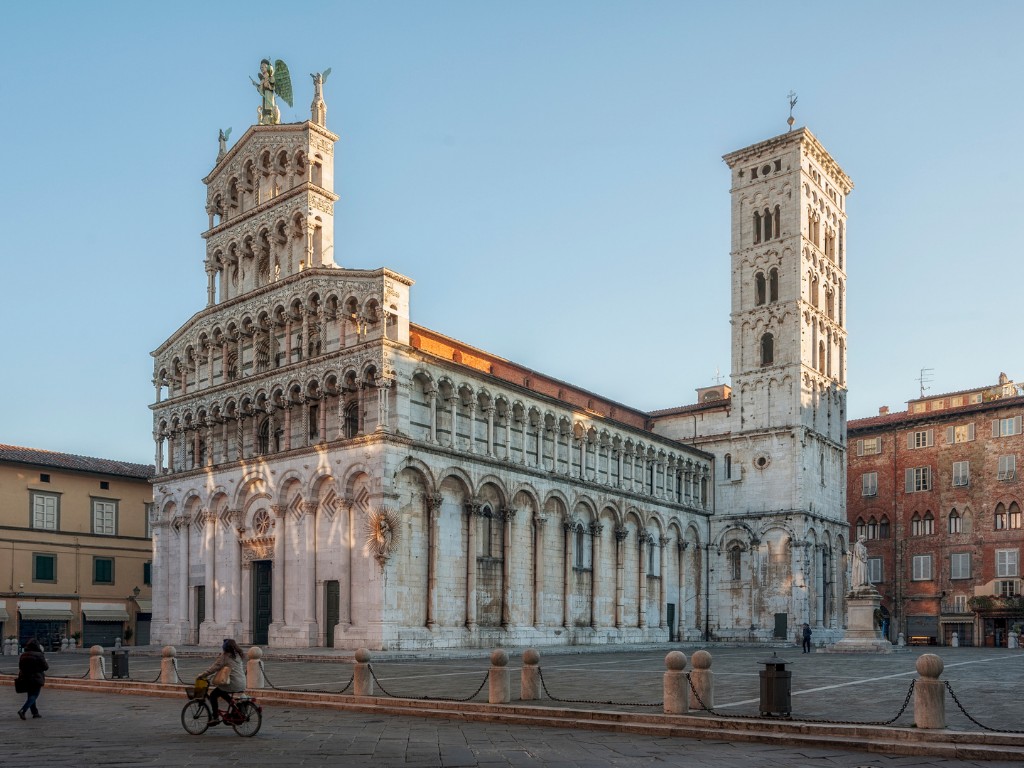
Lucca Lore of the Holy Face
The ancient city had many different people occupying its land. It was first founded by Etruscans and then became a Roman settlement in 180 BC. The Romans actually built the foundation for the wall to come. To this day, you can walk the Roman streets that the citizens of Lucca continue to use. After the Romans, the city was occupied by various medieval civilizations like the Lombards.
A city dating back to the ancient Etruscan times is bound to have its fair share of legends and folklore. One of the most famous stories in Lucca is that of the Holy Face (Volto Santo). The Holy Face is an ancient, eight-foot-tall wooden crucifix said to be crafted by Nicodemus, a holy figure from the Gospel of John. The legend states that Nicodemus fell asleep before carving the face in the wooden crucifix. When he woke up, lo and behold, someone had carved Jesus’ face in. Then, the crucifix was hidden for around 700 years until it was discovered on the coast of Italy on a ship with nobody on it. The next miracle involved a group of oxen, also unmanned, bringing the wooden Jesus to Lucca where it stands now in the San Martino Cathedral.
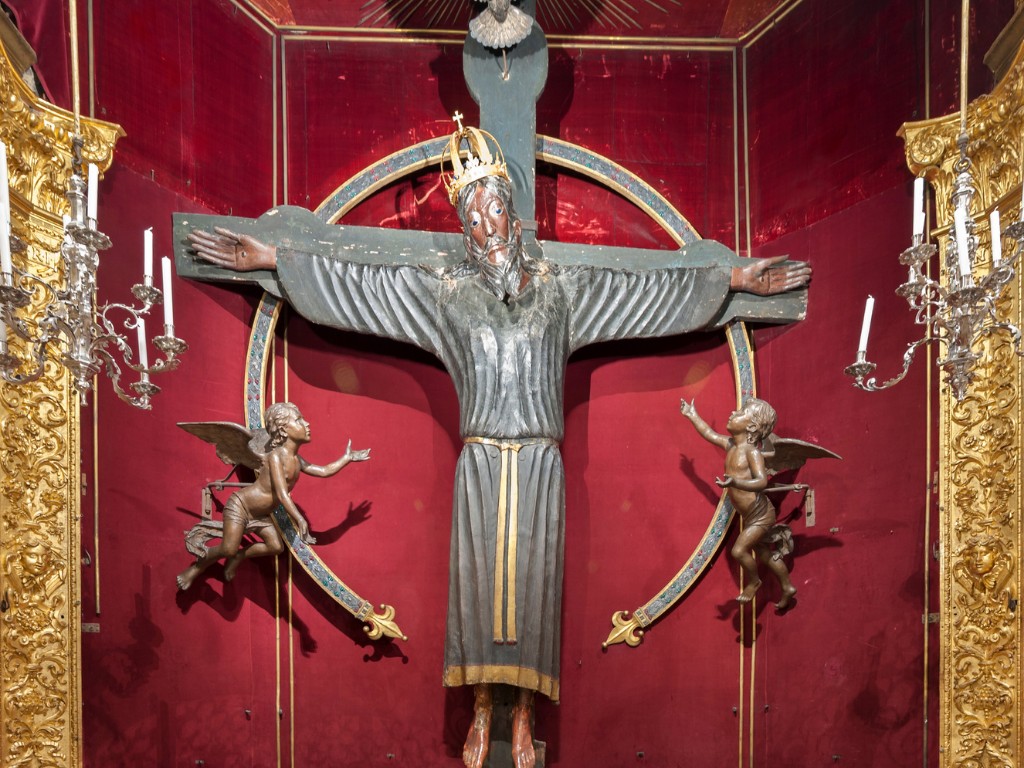
Roman Amphitheater and Guinigi Tower
When you’re in Lucca, you should start at the Roman Amphitheater, which is now a large public circular piazza and the center of the town’s life. Then, you’ll have to make your way up the Guinigi Tower, one of the few remaining medieval towers within the city walls. In medieval times, a citizen of Lucca would show their wealth and power by adding a tower to their palace. The special thing about the Guinigi Tower is that there’s a unique hanging garden on its rooftop. You won’t regret climbing all the way up after seeing the breathtaking townscape as the countryside curls around it. If that’s not enough reward, head back down and try a traditional Lucchese sweet treat, the buccellato cake.
As you might imagine, Tuscany is rife with good food and fantastic wines. Make your experience in Tuscany the most memorable by sampling its delicate and savory cuisine in an 11th century castle!
Pisa
Don’t let the tourists posing against the Tower of Pisa deter you from visiting the historic relic of a city that is Pisa. Like Siena and Lucca, Pisa is another area in Italy with artistic, religious, and political importance, especially during medieval times. In your adventure exploring city to city, you can easily fit in Pisa, a simple train ride from other Tuscan cities. Conveniently, Context’s four-hour Pisa Tour begins at the train station. During this tour, you’ll learn about the city’s great political past as one of the four Maritime Republics. The other three include Amalfi, Genoa, and Venice.
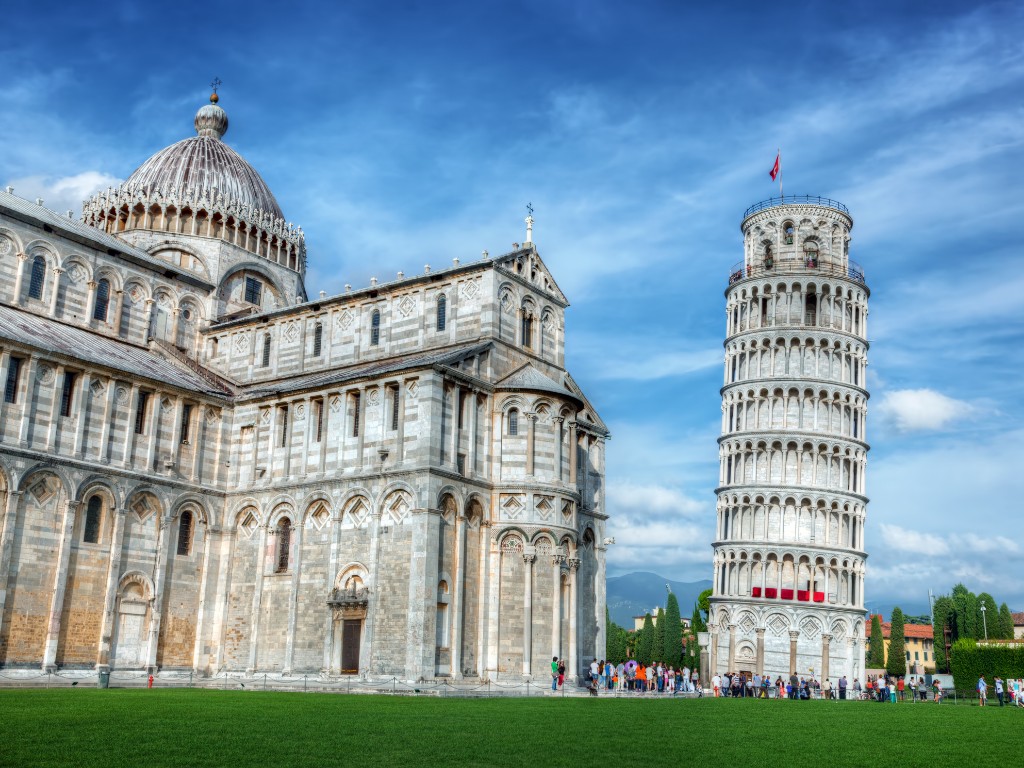
The Arno River
What people also might not know about Pisa is how important the Arno river has been in its history and identity. Because it was a Maritime giant, this river was instrumental to the city’s medieval trading endeavors. Of course, natural sources for trade and transportation can be very fickle. Pisa lost some of its status as a Maritime Republic after warring with Genoa. To make matters worse, the Arno river started changing its course and prevented goods from reaching the city’s port at the river’s end.
Universities in Pisa
Another point of interest in Pisa is the role of major universities like the Scuola Normale, considered to be one of Italy’s best educational institutions. Along with the University of Pisa, these two academic places have given Pisa a heightened cultural reputation. Given its academic inclinations, it's only fitting that Galileo Galilei was born in Pisa!
Campo del Miracoli
In addition to its renowned educational institutions, you can also find an intricate religious history in Pisa. The Campo Del Miracoli is a religious complex that houses the Pisa Duomo, the Pisa Baptistery, the Leaning Tower, and smaller landmarks like a museum that contains masterpieces that were previously kept in the Duomo (Museo dell’Opera), a museum for early fresco sketches (Museo delle Sinopie), and a gothic burial place for famous Pisans (Campo Santo).

There’s so much more to see in this fabulous historic complex than just the postcard tower! Although, we wouldn’t judge you for snapping that iconic Pisa-leaning photo.
Cortona
In the center of Tuscany, Cortona is another city with an ancient background. This secret Tuscan hill town gained more fame after it was the setting of Under the Tuscan Sun, a book by Frances Mayes that was later turned into a film in 2003. With its lush green hills and classic and quaint Italian architecture, you’ll see exactly why Mayes decided to come to this beautiful town.
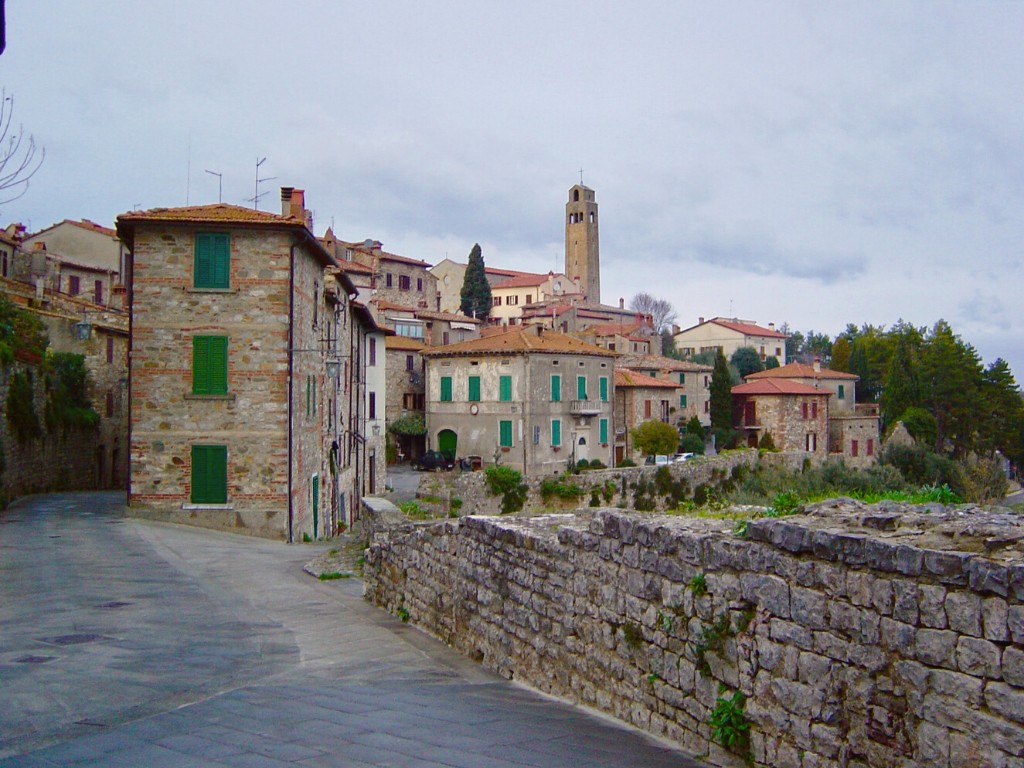
Cortona’s Medieval and Medici History
First an Umbrian settlement, Cortona is one of the oldest inhabited regions in Italy. It eventually became a Roman colony, then a Ghibellian city state in the 13th century, then a state ruled by the Medici’s of Florence. Wandering around Cortona, you’ll be able to spot Medici symbols and architecture frequently. The bastions and fortresses are all remnants of the family’s power. This unique medieval town is worth a visit if you like old artifacts from Etruscan times, medieval churches and convents, and a flavor of Tuscany without all the hustle and bustle.
Pienza
Pienza is the most important city in the Val d’Orcia region. Val d’Orcia extends from the hills south of Siena to Monte Amiata. This warm region is known for its world-famous wines and sloping landscapes that served as the muse for many Renaissance painters. Explore the region with an expert guide during our Full Day in the Val D’Orcia tour where you’ll get an in-depth experience with a walkthrough of Pienza, a lunch at a local trattoria in Montalcino, and a local wine sampling at the Montalcino Winery.
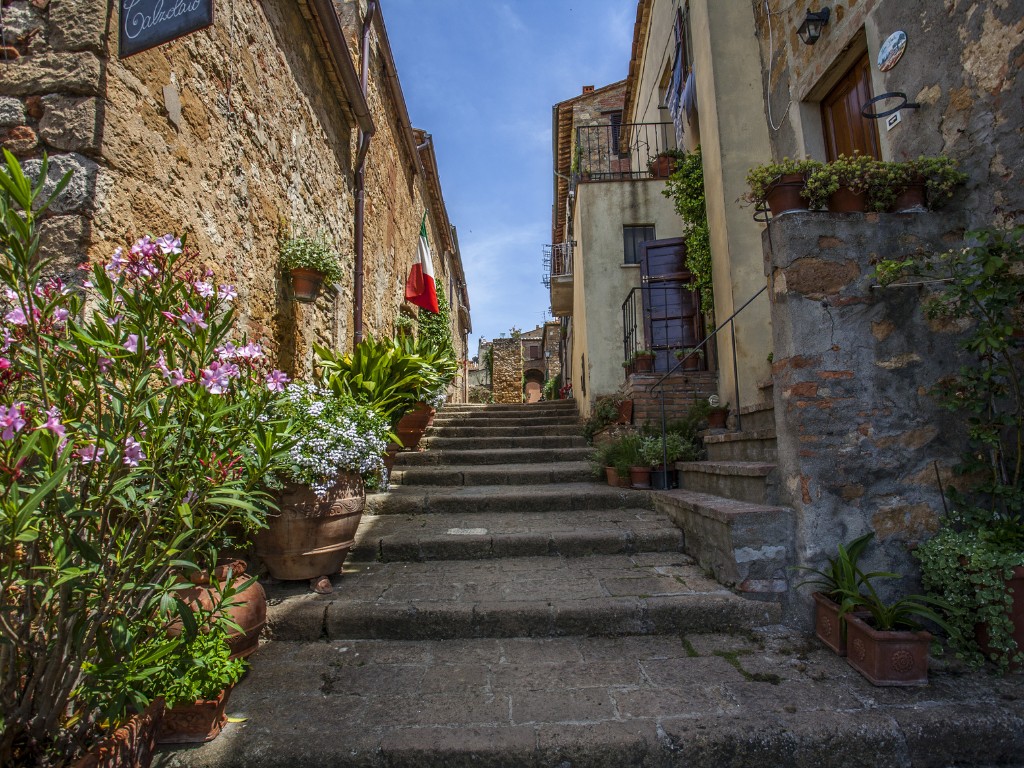
Pienza and the Renaissance City Plan
The town of Pienza is considered to be the pinnacle of Renaissance design. The urban planning incorporates classical elements that has been replicated throughout Europe. In the 15th century, Florentine architect Bernardo Gambarelli rebuilt the village to purposefully involve Renaissance and humanist ideals. You might have noticed this pattern in city plans throughout our discussion of Tuscan villages: a trapezoidal piazza surrounded by important buildings, a main cathedral or Duomo, sculpted gardens, and other public gathering places.
While you’re here, you’ve also got to try the locally produced pecorino cheese.
Castiglione della Pescaia
No trip to Tuscany is complete without a visit to its coastal gems. An ancient seaside town, the Castiglione della Pescaia is a popular destination for its natural beauty that includes beaches, natural parks, natural reserves, biking trails, and other outdoor activities. The gorgeous surroundings are its main draw, but it goes without saying that there’s a ton of history to absorb too. There are Etruscan archaeological sites and medieval hamlets to explore for those that want to journey to the past.
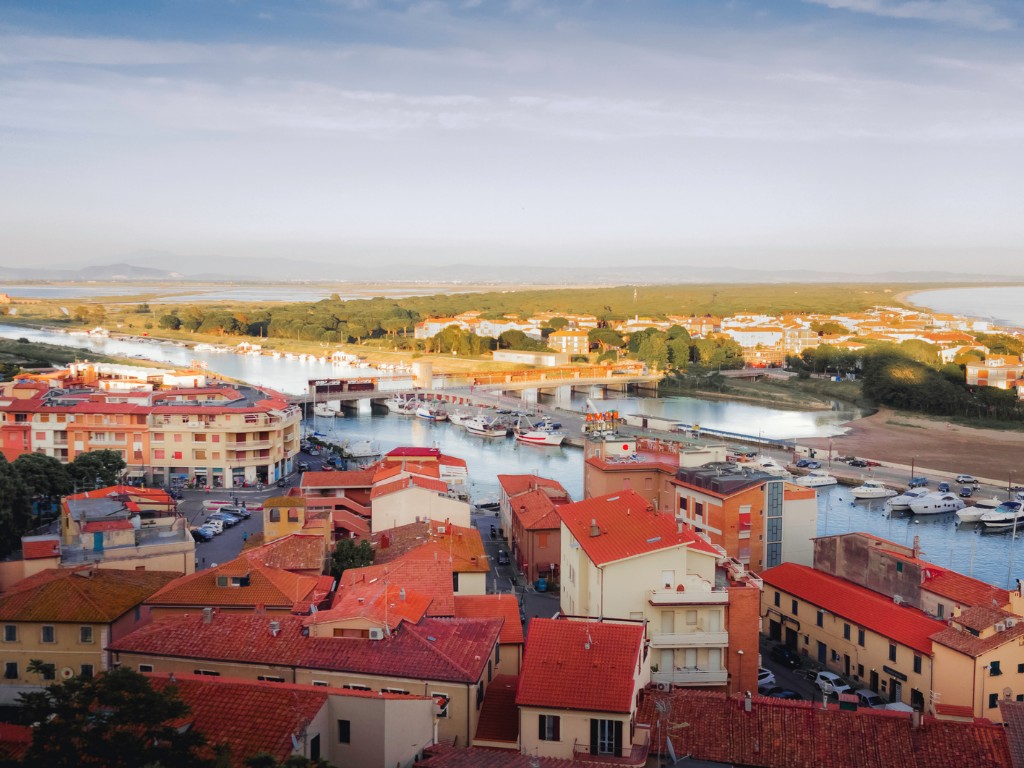
Castiglione della Pescaia's name is straightforward, offering exactly what it advertises: a castle and a fishing port. The castle, which is a private residence today, was built by the Republic of Pisa. The fishing port wasn’t just used for fishing — it was also an important place for defense against enemies coming from the sea. The strategic location of this coastal city brought the Etruscans and other civilizations. Trading goods like salt were plentiful in addition to the wildlife in this humid climate. The city almost disappeared completely after a series of pirate attacks in the Middle Ages, but then enjoyed relative peace under the protection of the Republic of Pisa in later centuries.
Take Via del Recinto and walk along the medieval walls to the “upper” old town where you’ll enjoy stunning views of the Tyrrhenian coast. The clear blue waters won’t disappoint. From there, other sites you can check out include the Church of Saint John, which has a unique bell tower. Then, make your way to the “lower” modern part of Castiglione della Pescaia that has good restaurants and shops.
The great thing about Castiglione della Pescaia is that it has something for everyone! It’s an incredible family-friendly destination chock full of history and nature.
